The journey from Cuzco is relatively event free. The well kept road takes you through terraced fields that cut into the Andean landscape. Filled with potatoes and quinoa, they feed the Inca descendants who live in the valleys that were once ruled by their ancestors’ glorious empire. The road takes you into a sleepy little town that is ringed by yet more ancient terraces. Arriving in the small, but beautifully formed Plaza de Armas (central plaza), the little town exudes a colonial charm. It is not until you take a narrow alley off the plaza to your hostel, that you witness the deeper history that fills every crevice of the valley: the Sacred Valley of the Incas. Ancient people would have visited, much like you are, and would have stayed in the Incan equivalent of your lodging. Ollantaytambo, the Inn of Ollanta (a legendary Inca general who has been immortalized in colonial poetry), is a living Inca town. It is like a mythical creature come to life. It is something that shouldn’t exist, yet somehow does.
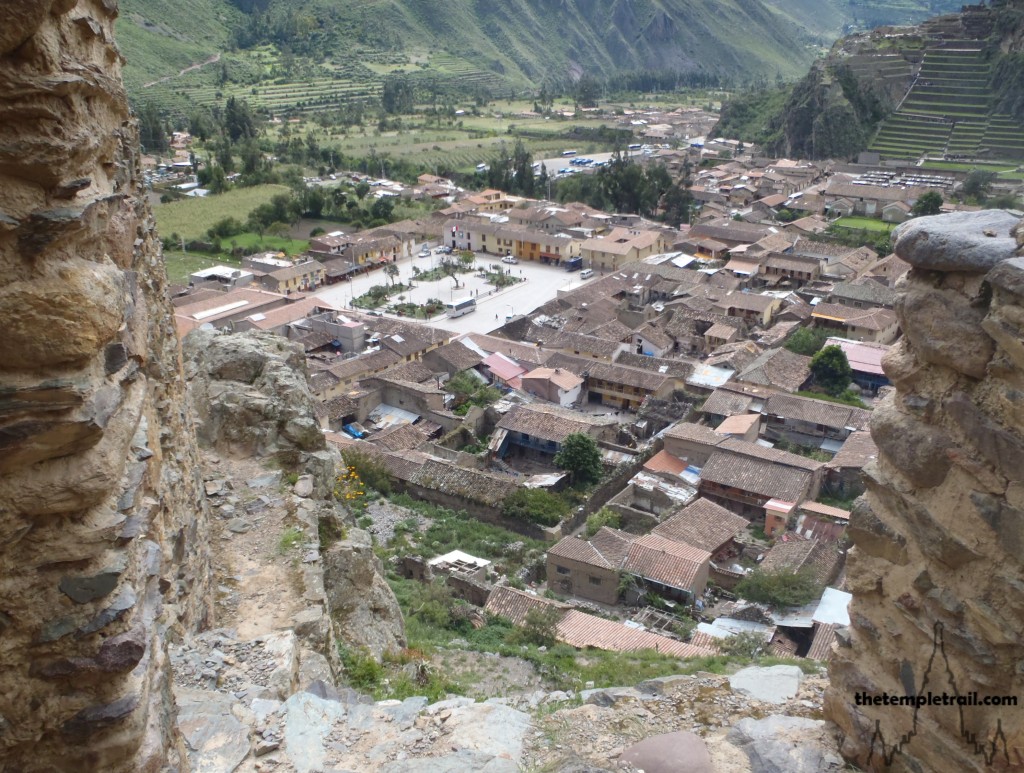
Built by the founder of Machu Picchu and of the Tawantinsuyu (Inca Empire), Emperor Pachacuti (Pachakutiq – the earth shaker), as a royal estate in the mid-15th century, Ollantaytambo was a stronghold against the Spaniards and the capital for resistance leader Manco Inca Yupanqui in the mid-16th century. The Inca withdrew from Ollantaytambo to the more defendable Vilcabamba shortly after a victory over a Spanish expedition, so the town was never razed through warfare.
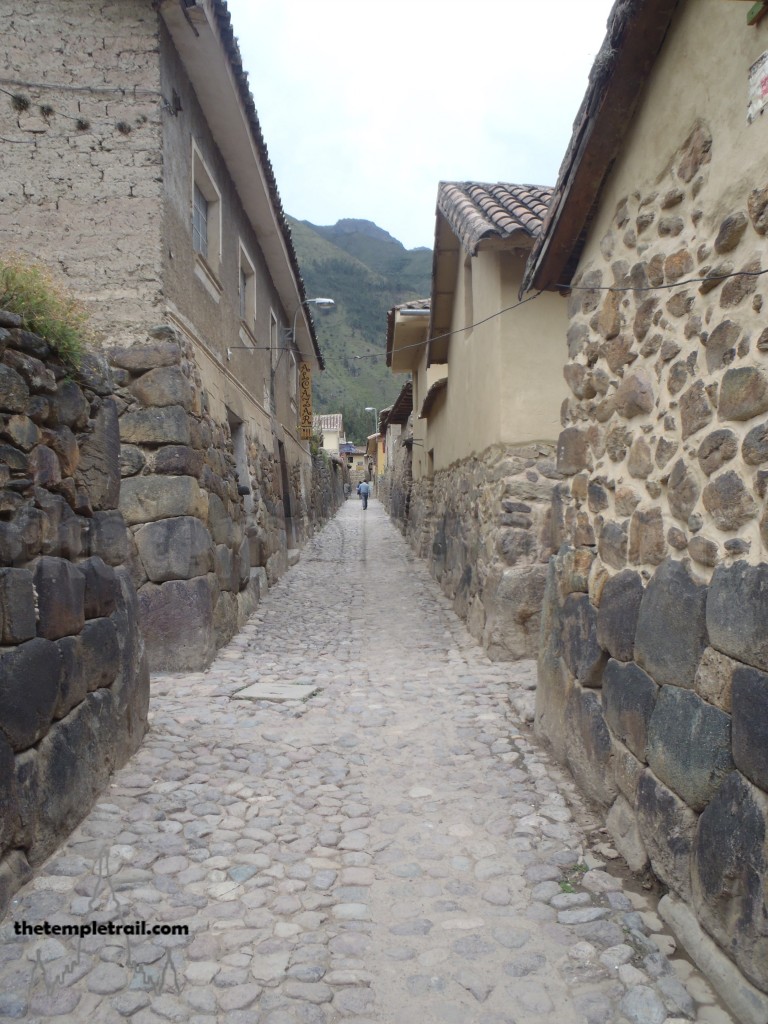
The streets of the old section of town (Qosqo Ayllu) hold some of the oldest continually used buildings in the Americas and the Inca stonework of the walls and door frames is flawless. The mysterious methods used to cut the huge stones to fit each other seamlessly without mortar are still elusive. The Inca kancha compound buildings form a regular grid pattern. These kancha each hold four single roomed buildings intended for habitation and would have housed Inca elites. The streets have a fully functional plumbing system built by the ancient Inca that is still in use today.
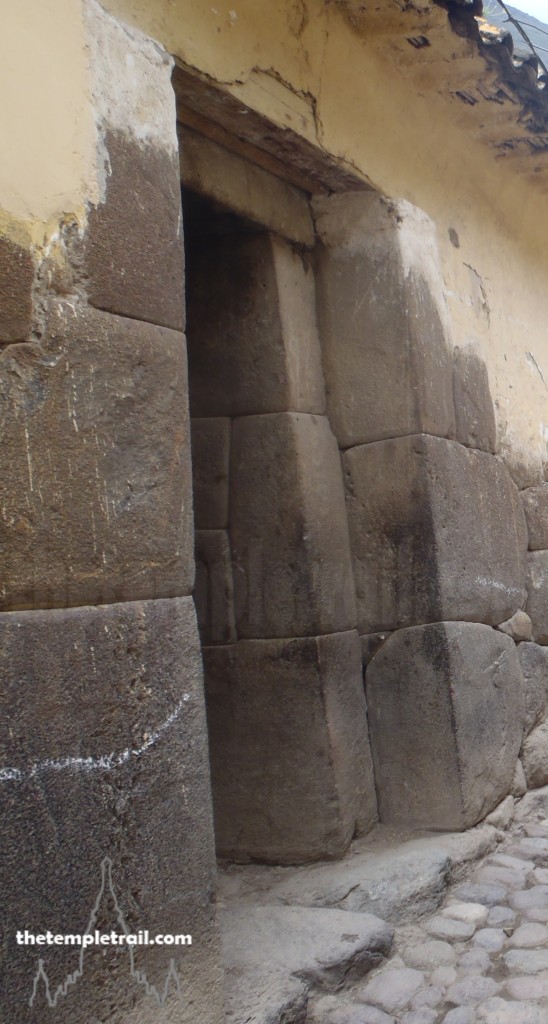
Climbing up a stepped narrow path at the end of a perfectly crafted street, your way becomes increasingly vertical. The incline gets steeper and the track more rugged with every step as you scale the rock-face that is said to resemble Viracocha (the Andean creator deity). You arrive at an old building that acted as a defensive watchtower and survey the valley. From here, you can see the layout of the Inca town and its near perfect symmetry. Across the valley on the other side of town lies Temple Hill and its terraces.
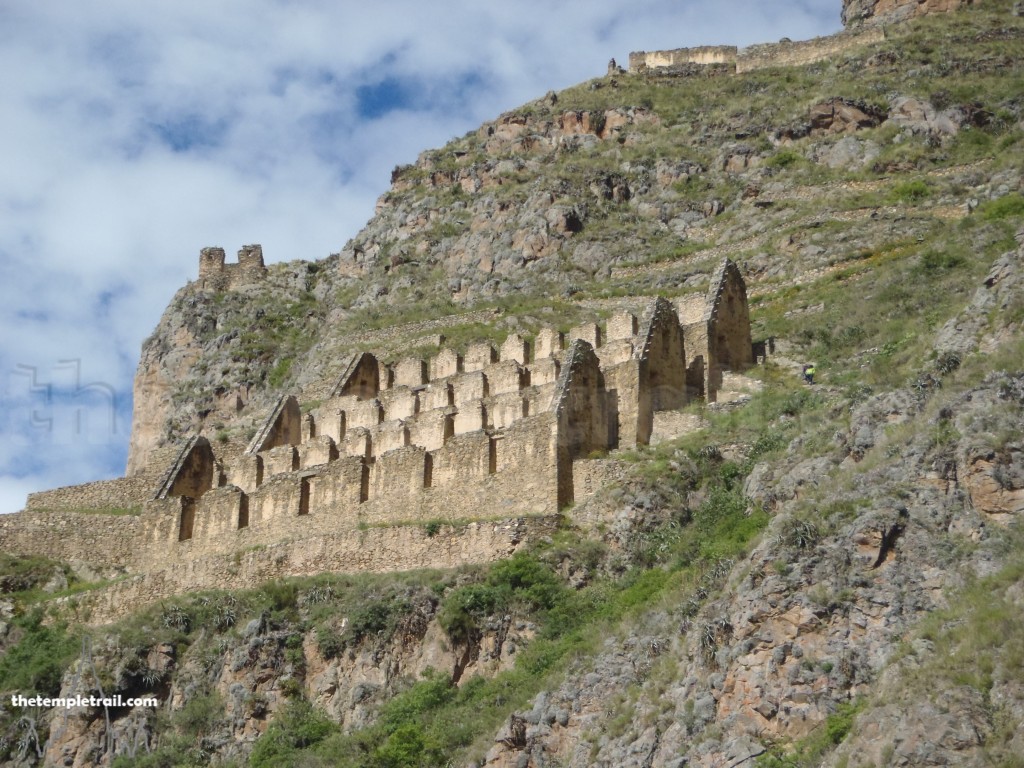
Gazing upward, you see the zenith of your climb: three wonderful qollqas (agricultural storehouses). The long galleries huddle together and cling impossibly to the steep mountainside and are collectively called Pinkuyllo (a kind of Andean flute). The wind becomes more aggressive the closer you come to them. Picking your way precariously up the treacherous, rocky trail, you fight the elements as the ancient Incas would have done. The Inca put the qollqas in this isolated spot so that the powerful chill winds would help preserve their produce longer. Each qollqa has a ventilation system and acts much like a modern refrigerator. After enjoying the high altitude panoramas of the valley, it is an easy decision to descend Pinkuylluna hill and try to find a warmer, more sheltered location.
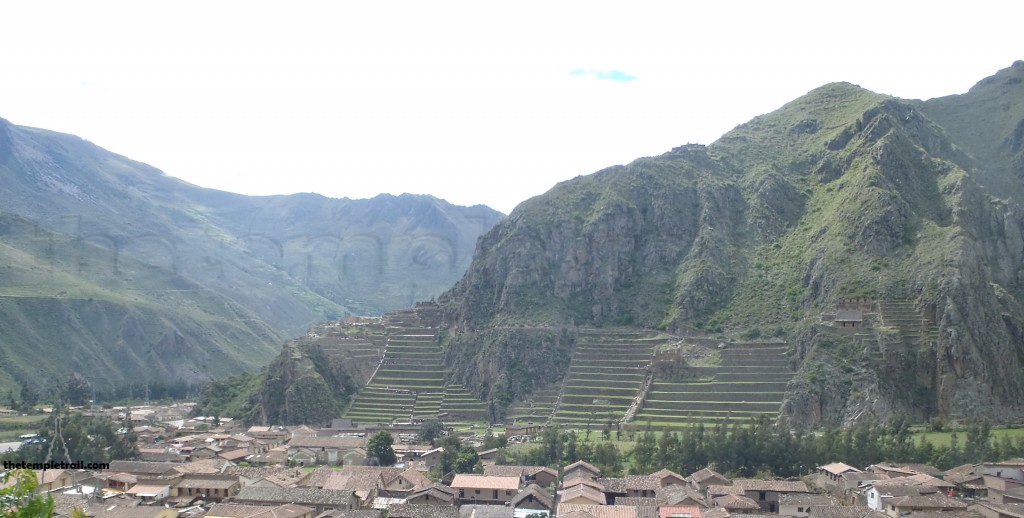
In the town, you take a much needed respite in a kancha that functions as a small family restaurant. Having filled your belly with trucha (the local trout) and some alpaca, you set out once more. This time, you head northeast via the Plaza de Armas to the old fortified strategic and ceremonial area (Araqama Ayllu) and the impressive set of terraces that climb up Temple Hill (Cerro Bandolista). Walking through the punku (doorway) of Araqama Ayllu and climbing up the practical Inca solution to farming on steep terrain, you are passing through what would have housed an incredibly diverse poly-culture of crops. A multitude of potatoes and grain varieties such as quinoa and amaranth would have been cultivated here to feed the empire. The terraces of Ollantaytambo are built to a very high standard. They begin in the south of the town and continue to where you stand now. The terraces south of the town are called the callejones (alleys) and the famous ‘pyramid’ terrace landmark lies here. The terraces were built to be deep, wide and very long (hence the name) and they are protected from the wind by the walls that also trap the sun’s heat and release it through the night. The agricultural ingenuity of the Incas never fails to astound and impress. It is little wonder that the sun and water were of such religious significance to them.
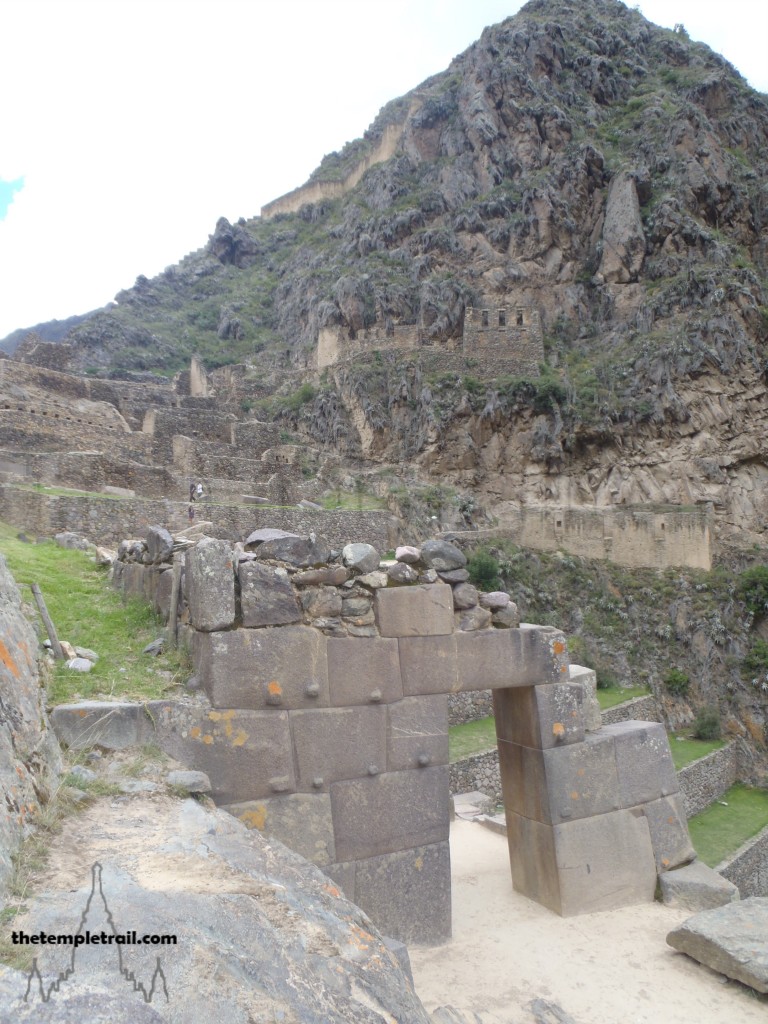
Arriving at the top of the terraces, you are in the temple sector. This part of the site was in the process of being built and has been left in its unfinished state. A number of strewn blocks (known as weary stones as they seem too tired to go further) attest to this and you feel you are standing in the middle of an ancient, holy construction site. Here, a grand temple of the sun was intended. Worship may have already begun, but the temple never saw completion. The Enclosure of the Ten Niches awaits your coming after a beautifully crafted, yet incomplete portal. The next part of the complex is the Platform of the Carved Seat and finally the site of the Templo del Sol (sun temple) itself. The whole site would have been spectacular if fully constructed, yet it still makes an impact with its huge Wall of the Six Monoliths. Each stone weighs over 50 tons and the method used to bring them to this spot from the quarry of Kachiqhata is a mystery. The reason the construction stopped is also an enigma. Whether it was the retreat of Manco Inca, an internal war or the arrival of the Spaniards remains lost in time.
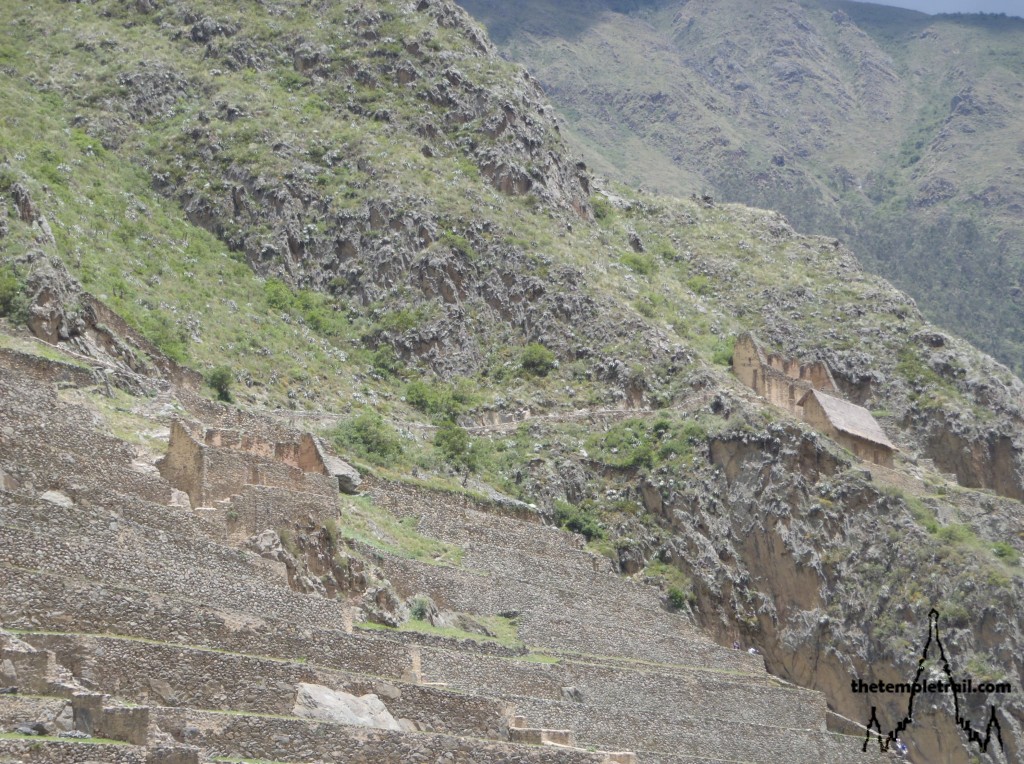
After absorbing some of the sun’s rays that shine down upon its temple, much like the stone walled terraces, you could take the steep path for over a kilometre up to the small ruin of Intihuatana (a sundial used to predict the seasons for agriculture) that sits on the precipice, but instead you opt to take the path that follows the terraces to the northeast. Here, the remains of two functional buildings mark the point at which you begin your descent through the terraces to the ceremonial area at the base of the hill.
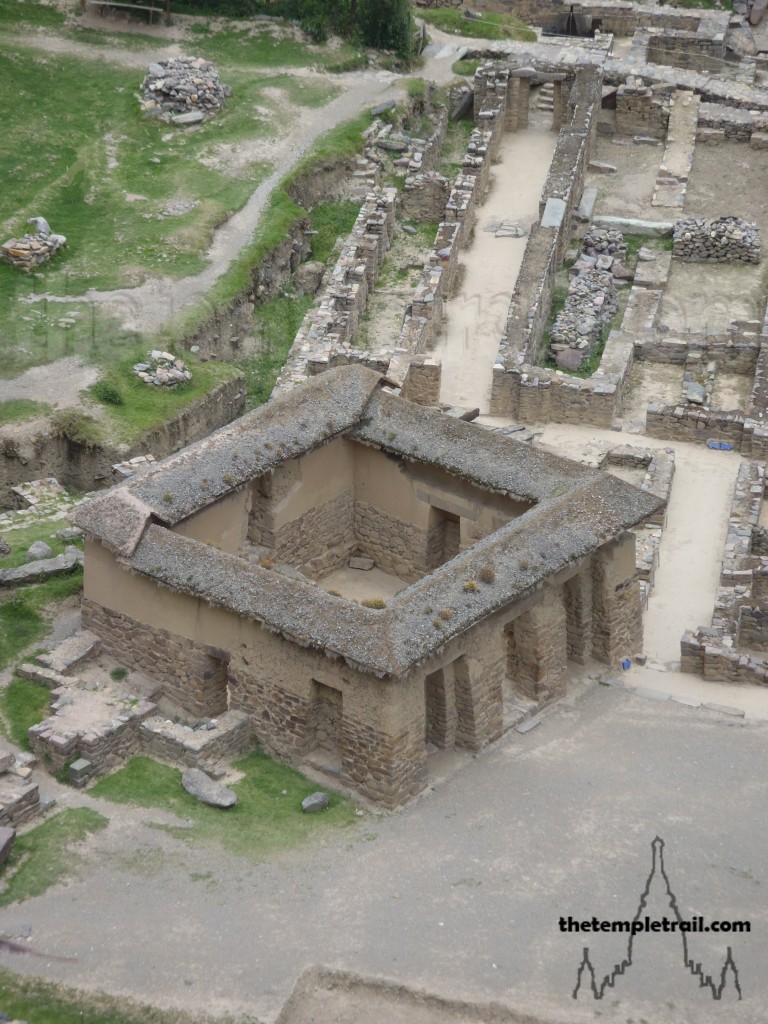
At the bottom, you are confronted by Araqama Ayllu, a complex filled with fountains (or baths) next to the Patakancha River. This area was dedicated to the Cult of Unu (water). The fountains make up a complex irrigation system as well as having a religious function. Here the Templo del Agua (temple of water) has been moderately reconstructed and holds an important fountain inside its four walls and open roof. Nearby is the Baño de la Ñusta (bath of the princess); a well carved fountain hewn from a large granite block. South of the Templo del Agua, several small field stone and adobe sanctuaries and buildings are dotted around Manyaraki (the main square of this area), but the site is a shadow of what it once was.
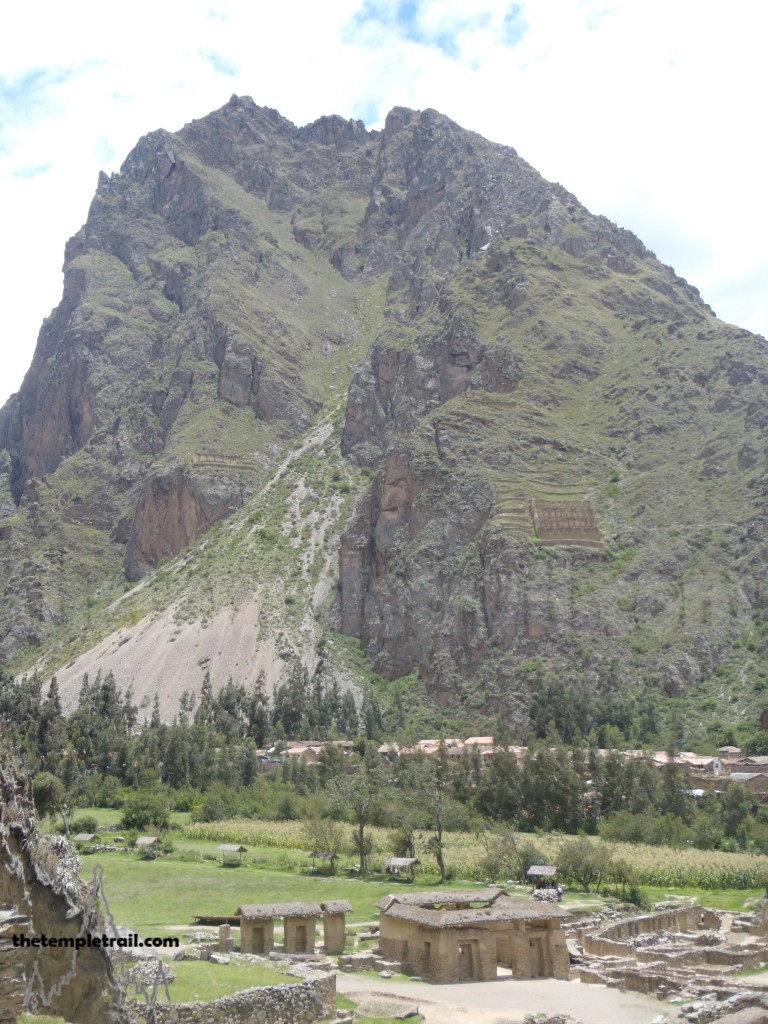
You leave the compound and head back to the Plaza de Armas and what was once the entrance to the town. Drinking a coffee in a beautiful colonial café, you ponder how the Inca mixed religion with a sophisticated agricultural system that included solar management, climate control, hydraulic and irrigation systems and refrigerated food storage. How they were able to predict the changes of the seasons and plan accordingly. That the processes required to produce this food were of a spiritual nature is not ludicrous and the Inca would not have seen a separation between land and gods. It is here, in Ollantaytambo that the Inca have left us a lesson in sustainable, natural agriculture. It may be the greatest gift they could have given.
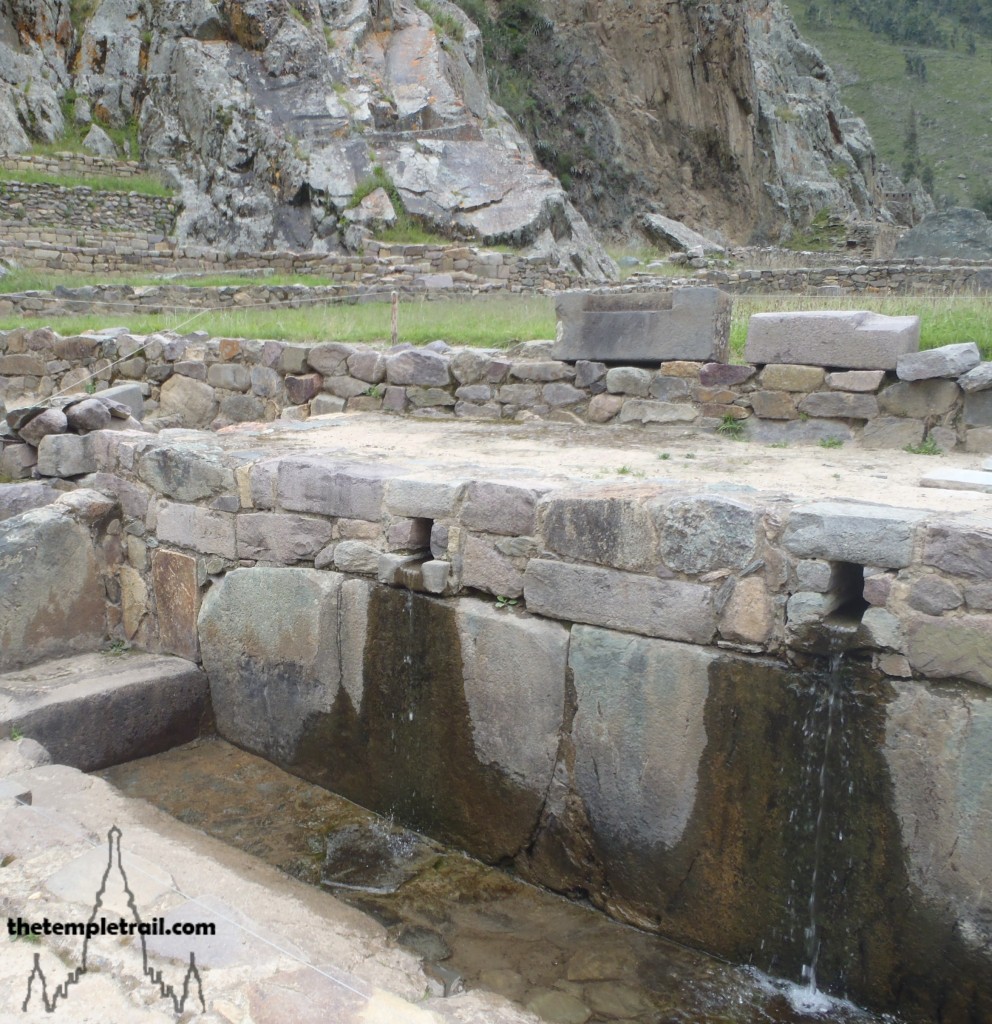
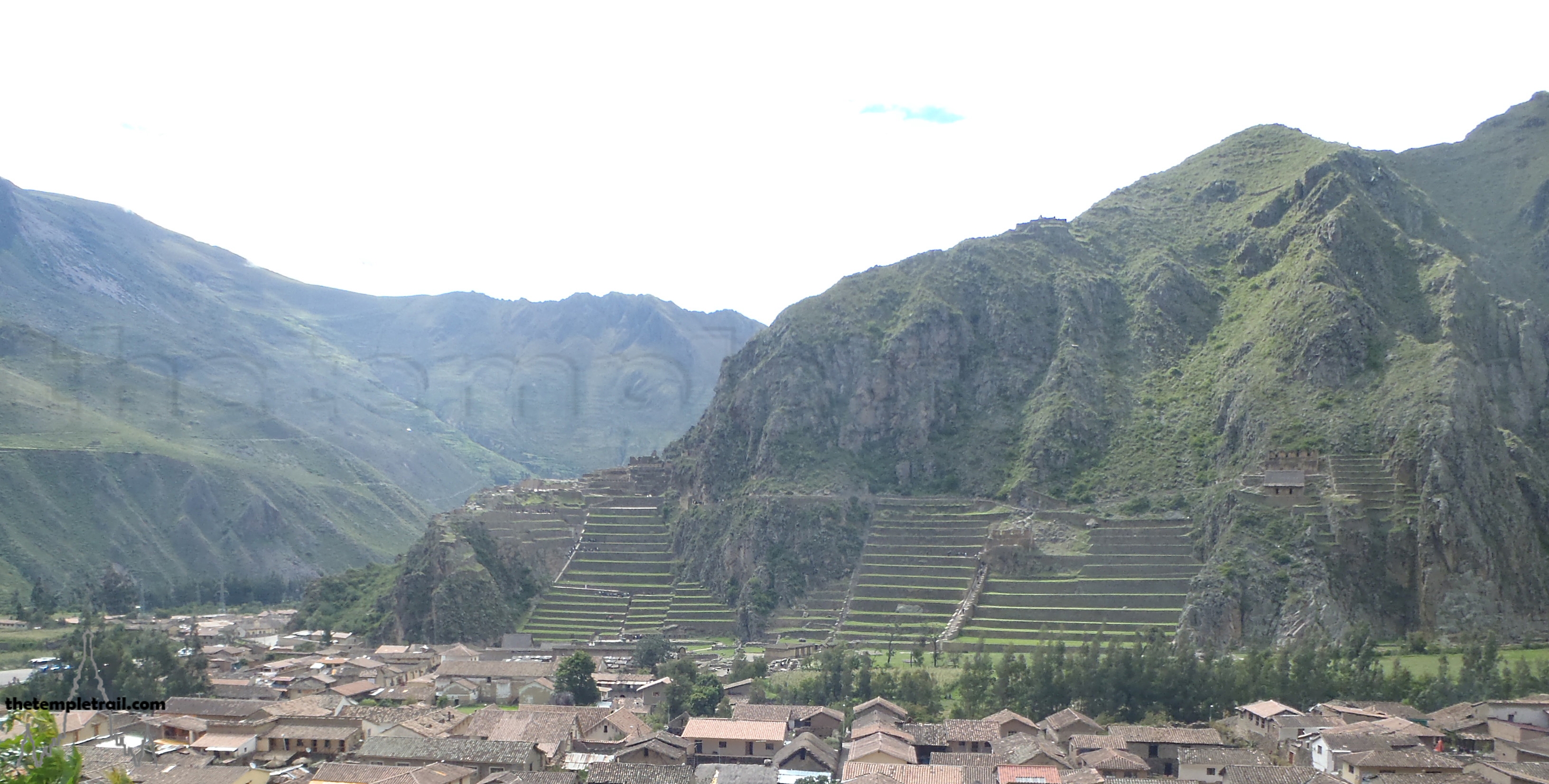
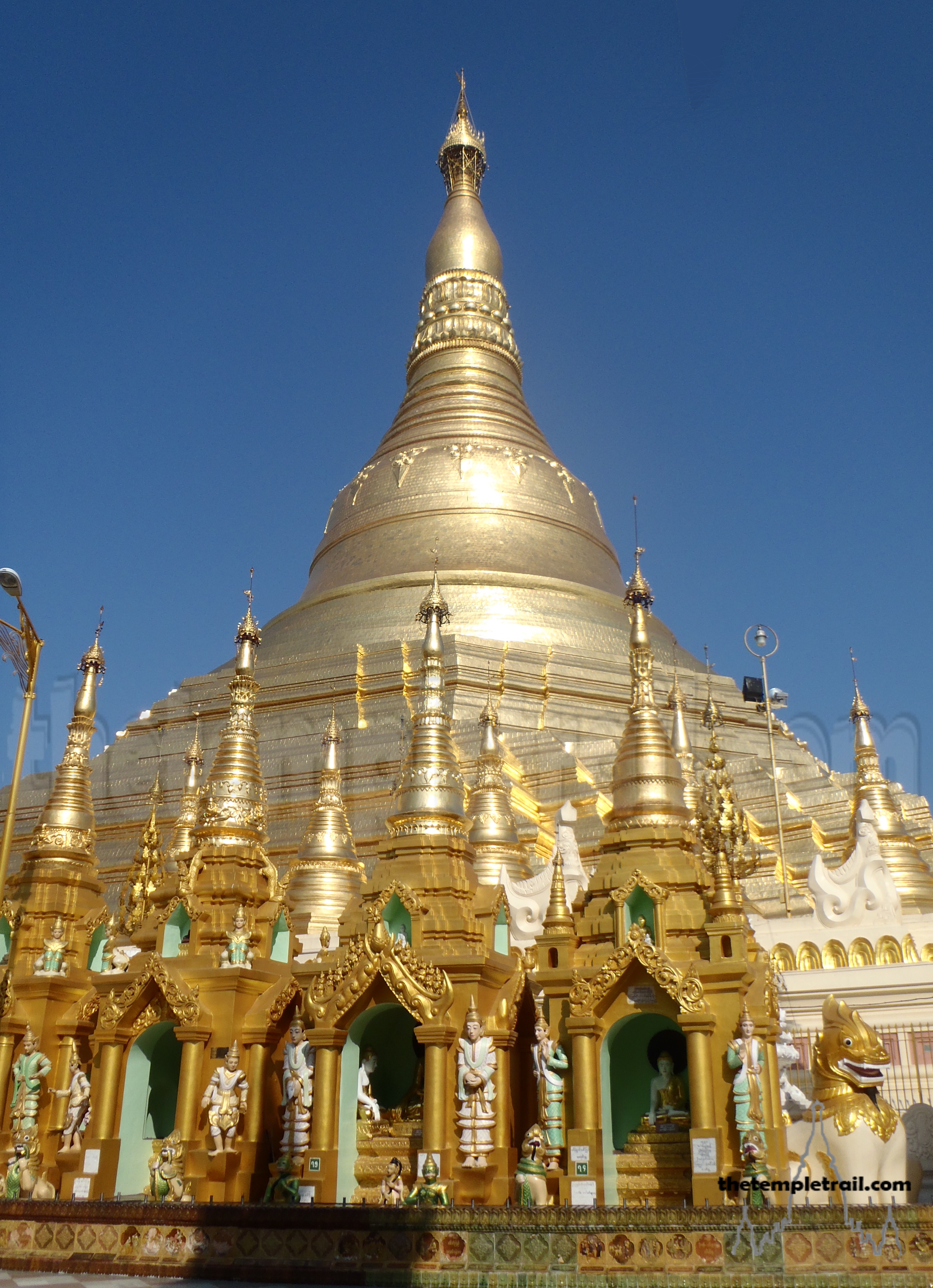 Shwedagon Paya
Shwedagon Paya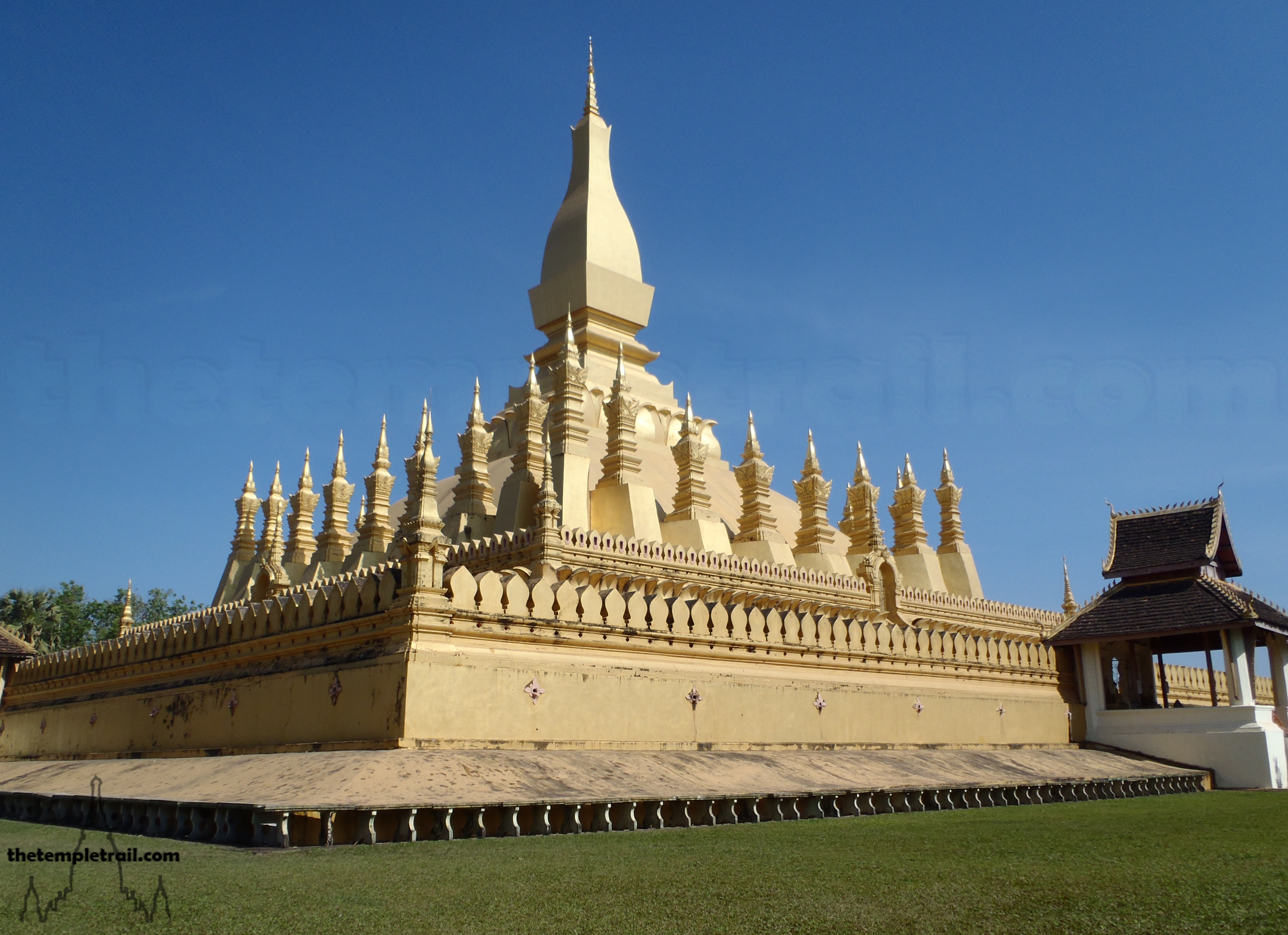
[…] can see much more about the history of Ollantaytambo here. One cool thing that we didn’t know about at the time, and therefore didn’t notice […]